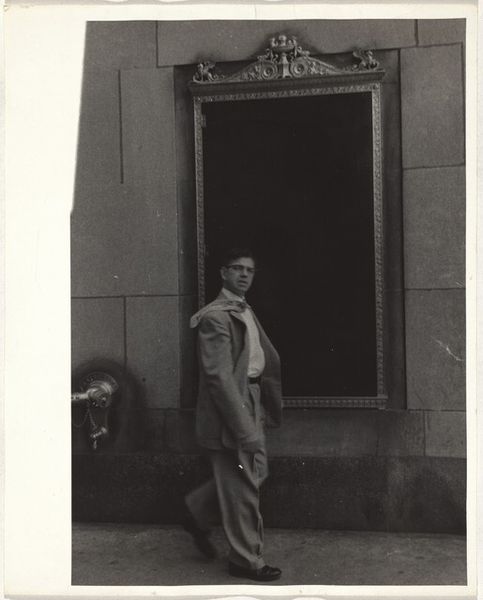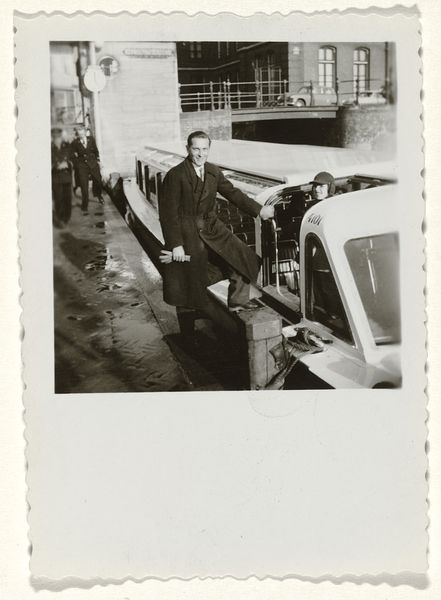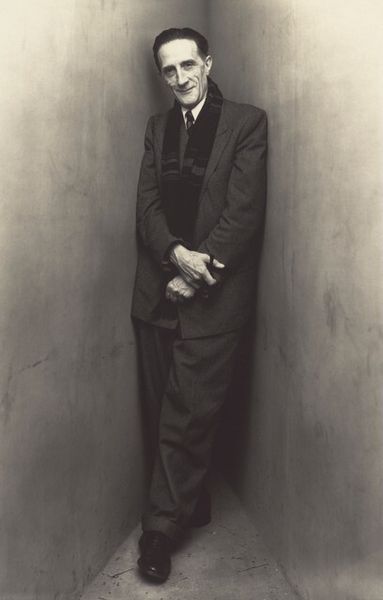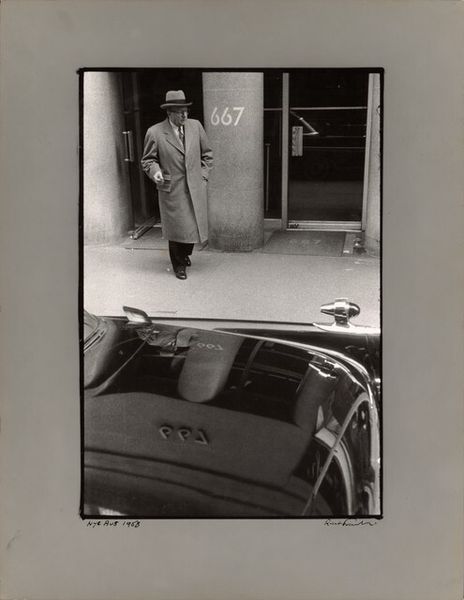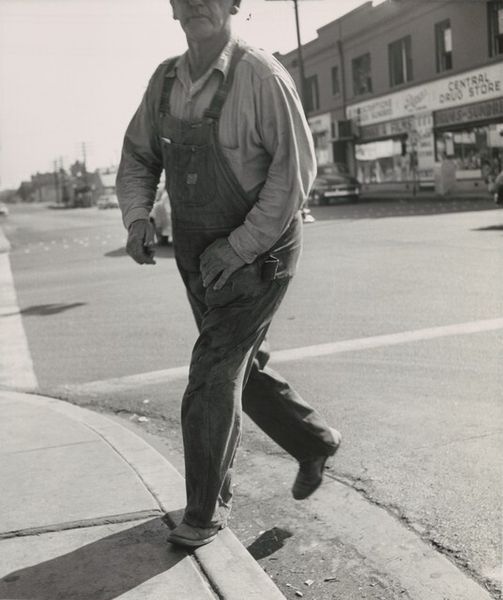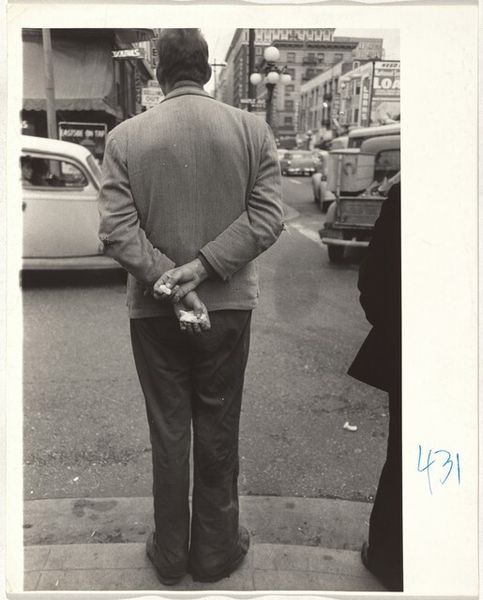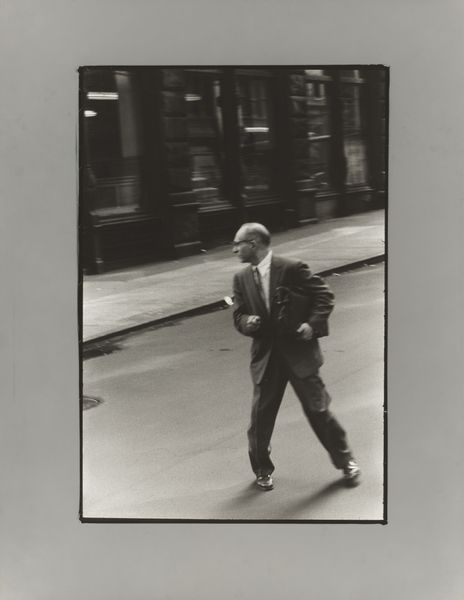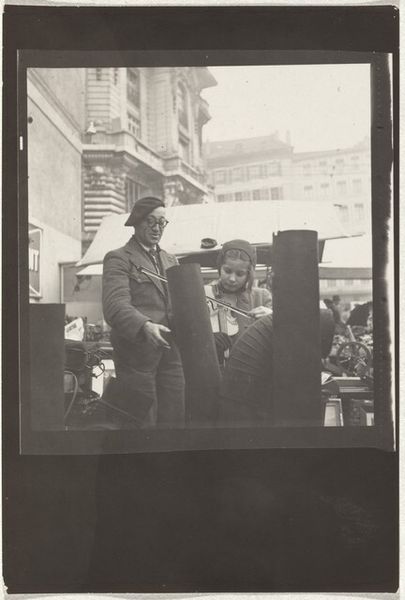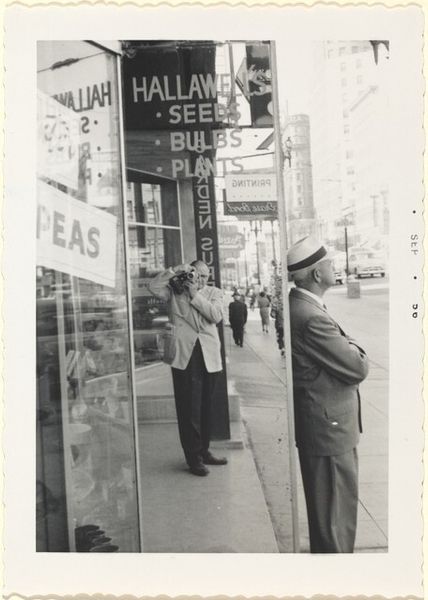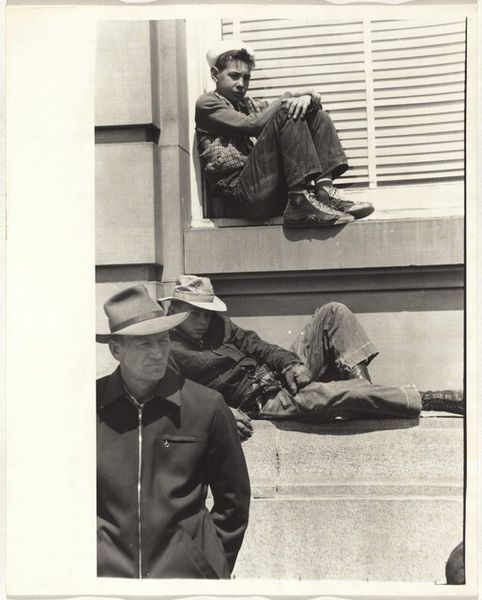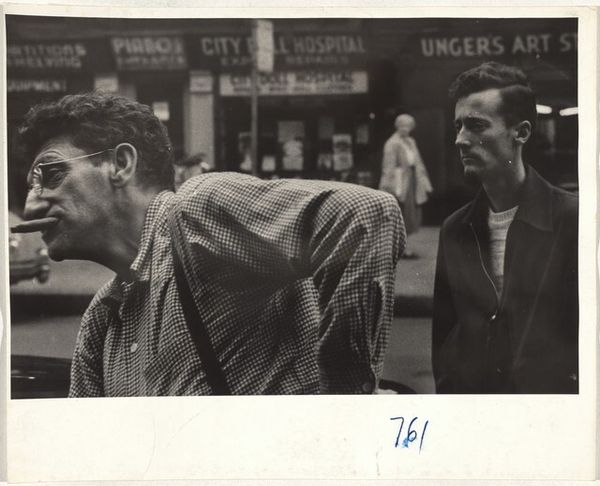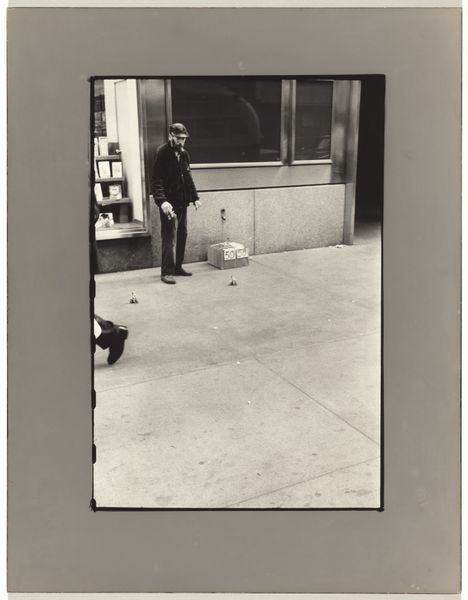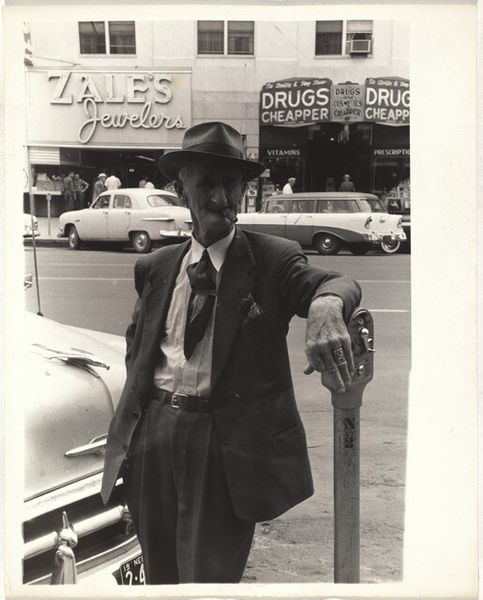
print, photography
#
portrait
#
print photography
# print
#
street-photography
#
photography
Dimensions: sheet: 25.3 x 20.4 cm (9 15/16 x 8 1/16 in.)
Copyright: National Gallery of Art: CC0 1.0
Curator: What strikes me first about this image by Robert Frank, “Man in front of Antoine's--New Orleans,” taken in 1955, is the palpable moodiness—the way the figure blends into the shadows. Editor: The grainy texture, typical of Frank's work, only reinforces that sense of melancholy and distance, as though it were recorded through heavy smog. I'm interested in the sign above, the way "Antoine's Restaurant, Since 1840" appears next to that downcast brow and dark, double-breasted suit. The layers of wealth, class, and access here can't be denied, nor their deep roots in U.S. history. Curator: I wonder what he's waiting for, caught between aspiration and something far heavier... Does it seem he doesn't quite belong, almost swallowed by the city’s dark shadows? Or maybe he *is* where he should be, exactly in that pocket of uncertainty. I find beauty in it all. It is this contrast, after all, that creates the image’s pull. Editor: For me, the beauty comes from how the photograph calls attention to the often unseen networks that prop up refinement. The photographic *print* itself is a commodity and its production required particular processes, and no small measure of labor, all feeding into consumption—food and aesthetic—within a complex social machine. The print in itself can make claims against what that suit signals... Curator: So you are viewing this photographic medium then, more as a product of socio-economic forces—rather than seeing the image as a frozen moment in time? The beauty isn't purely aesthetic, in other words, but born from that tense play between labor and representation? I confess I read that tension, but tend to find in it, beauty, rather than critique. Editor: Definitely! By dwelling on materials and making, we question established values—challenging what qualifies as 'art' and who gets to consume or create it, and how these frameworks produce hierarchies of worth and even taste... Curator: In the end, Robert Frank, the man himself, remains a part of the story as well, as the outsider bearing witness to something real, revealing a haunting tension in mid-century America. Editor: It does give one much to chew on in pondering both wealth and value!
Comments
No comments
Be the first to comment and join the conversation on the ultimate creative platform.
